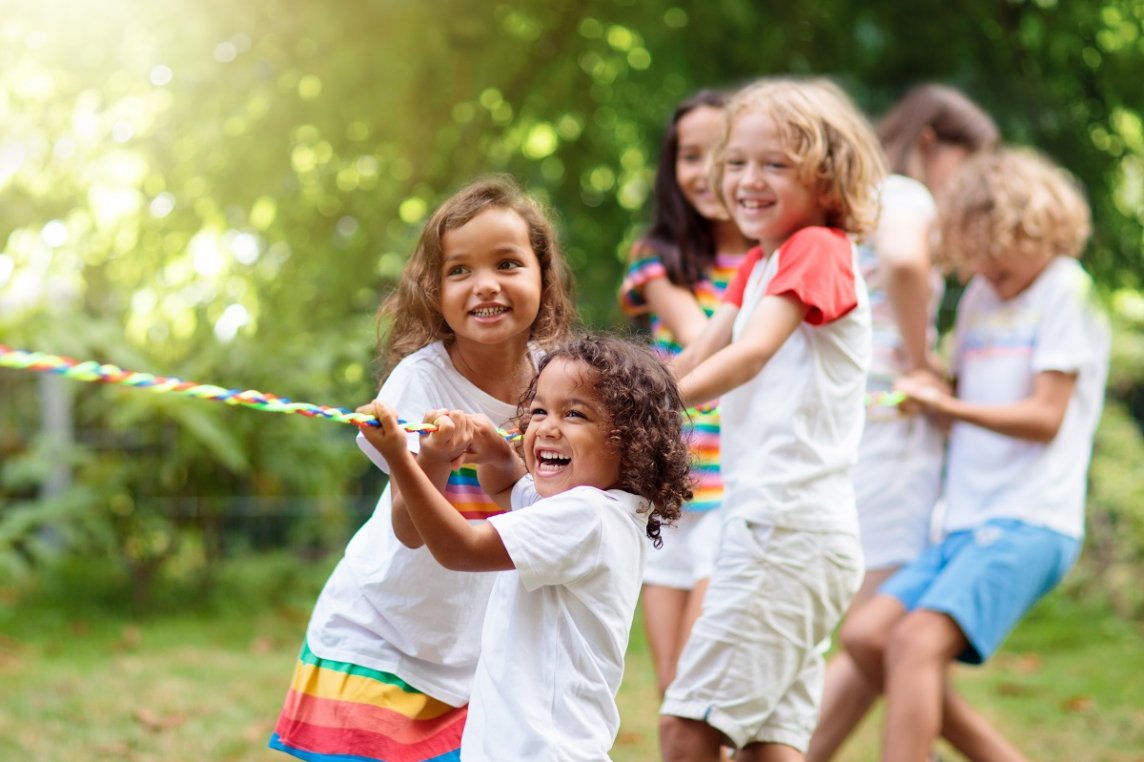The Benefits of Outdoor Play

Summer is here and it’s time to spend time outside enjoying everything the environment has to offer.
So put on the sunscreen, grab a bottle of water, and let’s explore. Outside activities encourage children to learn about science and no planning is necessary. Children are natural explorers so bring a magnifying glass and a few small bags. By turning their questions into projects, you could be starting a small vegetable garden. Fast-growing seeds (peas, green beans, corn) are perfect for home experiments. Picture books like The Carrot Seed, by Ruth Krauss, and Growing Vegetable Soup, by Lois Ehlert, add early literacy to the mix while building children’s vocabulary and knowledge. If you need free vegetable seeds, come to the FACE Center at 49 Osborne St to pick some up.
Outside play provides opportunities for social interaction with other children at our local playgrounds. Outdoor activities provide a chance to practice social and emotional skills with other children, including problem solving, turn taking, encouragement, self-control, safe risk taking, and following the rules of a game. Play provides opportunities to develop empathy; for example, imagine one child encouraging another to try the slide or a child comforting another who has fallen while running.
The obesity rate for U.S. children ages 2 to 5 is 14 percent, leading to an increased risk of health problems like diabetes and heart disease. The American Academy of Pediatrics recommends supervised outdoor time for children from birth to age 5 of at least 30 minutes to 1 hour each day. Outdoor play is a great way to model the joy of physical activity. When kids run, jump, climb, throw and kick balls, and ride toys that require balance, they also build gross motor skills and start developing the habit of being active.
You can use outdoor spaces to create intentional learning activities that are difficult to execute inside. There’s great value in looking at books about nature in the shade of a tree, pouring (and splashing!) water at an outdoor water table, building large structures in the sandbox or mud, collecting leaves, watching a parade of ants, or playing pretend on a playground structure. To make the most of your outdoor time, think about creative, joyful, engaging activities that capitalize on children’s need to move. Remember making mud pies and forts when you were a child? The outdoors is the perfect place for big (and messy) projects that support STEM (science, technology, engineering, and mathematics) skills, such as building, sand and water play, and investigations of the natural world.
Outdoor play promotes better sleep and children stay healthier. A study of 2- to 5-year-olds showed that children who play outdoors sleep better at night as play reduces stress. Playing outdoors has benefits for both young children and their families. It’s a refreshing pause in the day’s schedule—time set aside to look and listen, explore and observe, move and let loose.
Anne E. Mead, Ed. D. is the Director of Family, School, and Community Partnerships for Danbury Public Schools. She can be reached at 203-830-6508 or by email at meadan@danburyu.k12.ct.us.







